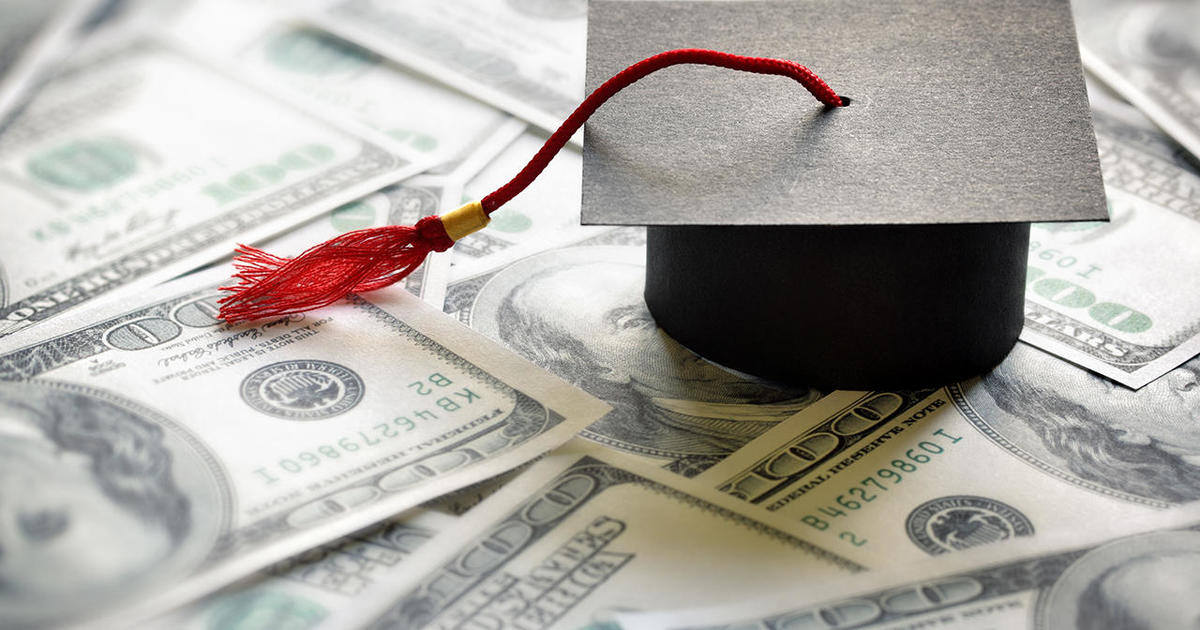Back in 2019, Freddie Williams Jr. had a lot on his mind at his college graduation: “That’s when, you know, it started really kicking in – hey, this is how much you owe, you’re gonna have to start paying this back,” he said.
Growing up on the south side of Chicago, he had dreamed of going to Morehouse, the historically Black college in Atlanta that counts Martin Luther King Jr. among its distinguished alumni. “Once I got accepted and saw that, hey, the money is being offered, [I] didn’t have an idea of what I was really getting myself into,” he said.
And then at commencement, Williams got the surprise of a lifetime, when billionaire businessman Robert F. Smith pledged to pay the student loans for the entire class, clearing some $34 million in student and parent debt. “We’re gonna put a little fuel on your bus,” Smith said.
Williams said, “It was crazy, you know? To look back and see my parents in the stands crying and celebrating. That’s when I knew like, okay, this is big.”
He said his total debt – around $125,000 – was a “tremendous” weight to be lifted.
Total student loan debt in the U.S. is now nearly $1.8 trillion, and experts say many young people are delaying buying homes and starting families because of it. But the Morehouse Class of 2019 is something of an experiment: What could lives look like when students graduate debt-free?
Filmmakers Joshua Reed and Emani Rashad Saucier, who were also part of the class of 2019, are making a documentary about how their classmates are faring thanks to that generous gift.
“I think only now, as we get five years out, people realize the implication of what having no loans is,” said Reed. “You can buy a house right after graduation, which people we’ve interviewed did. Someone started a nonprofit to get Black and Brown students into tech. Someone became a family man.”
Saucier said, “This is what happened at Morehouse: They got the debt cleared and they were able to have this exponential effect. What happens when we clear the debt for millions of Americans?”
Last year the Supreme Court struck down President Biden’s ambitious $430 billion student debt relief plan. Since then, the Biden Administration has expanded existing programs to cancel $167 billion in debt, with most relief going to people working in the public sector and for nonprofits.
Josh Mitchell, author of “The Debt Trap: How Student Loans Became a National Catastrophe,” said, “They’re sort of doing these piecemeal fixes, but they’re not doing anything to stop the underlying problem.”
Simon & Schuster
Mitchell said Congress created the federal student loan program to expand college access. But by allowing students and their parents to borrow virtually any amount to study virtually anything, the government has enabled colleges to raise tuition without consequence. “There’s a cycle of: students take out loans, schools raise their tuition, students take out more loans,” said Mitchell. “That’s essentially what’s happened over the past 40 years. That’s why tuition (up until recent years) has grown at sometimes triple the rate of inflation.”
More than half (51%) of all college students now graduate with student loan debt, with the average owing $29,400, according to the College Board’s “Trends in College Pricing and Student Aid 2023” report.
Mitchell says those levels of student debt are negatively affecting the economy: “The U.S. economy is the world’s biggest, most dynamic, in large part because of higher education,” he said. “But you also have a lot of students who are – not in default in their loans, but are devoting more and more of their paychecks to paying off debt. That’s money that they could have been using to save for retirement, or buy a house, or to even start a business. For the average student, there is a payoff for going to college. But I think that the problem is they’re overpaying,”
Asked why the cost of tuition has increased at a rate greater than inflation, Nicole Hurd, president of Lafayette College, a private four-year school in Easton, Pennsylvania, said, “Colleges and universities obviously have to be good stewards, and we have to constantly look at our business model. But I will say this: We’re in the business of human capital, and human capital is expensive. So, when you think about investing in teaching, research, scholarship, those things are investments we have to make.”
Hurd worries that fear of student debt is discouraging the lower- and middle-income students who benefit most from attending college: “We’re so fixed on the price, and we’re thinking about the sticker shock of the price. We’re not thinking about the long-term investment as individuals, as families, and as a country. If somebody goes to college, their children will go to college, their grandchildren will go to college. It changes everything.”
Tuition and room and board at Lafayette is more than $87,000 a year, though in recent years, the school has made efforts to offer more grants and fewer loans as part of its financial aid packages.
Hurd said, “Some debt is okay. A little skin in the game is not the end of the world. What we can’t have is people [having] tens of thousands, hundreds of thousands of dollars of student debt. That’s not okay. But the non-profit sector in higher education is getting much better about being transparent about what debt is, and then making sure students and families make good choices.”
Still, more than 40 million Americans have student loan debt, with 3.5 million owing more than $100,000, according to the College Board. The Education Data Initiative says the average interest on that debt is 6.87 percent; the average length of repayment, 21.1 years.
It’s why filmmaker Joshua Reed believes the story of the Morehouse Class of 2019 needs to be told. “People are being crushed by the immense weight of this debt,” he said. “But once it’s relieved, they can go on to do all sorts of things.”
Freddie Williams Jr. said he thinks about not having to pay back student loans almost every day. He was back on campus last month for the five-year reunion of that lucky class. Now a 26-year-old software engineer, he said that, instead of paying back a mountain of debt, he gets to pay the gift forward: “It was, you know, bigger than just having my debt paid off. Because of that gift, you know, I was able to buy a house, and with me buying a house, that allowed for my brother to move in while he’s finishing his degree. And I know it, you know, in my soul that I have to continue to give back and pass it forward.”
For more info:
Story produced by Mark Hudspeth. Editor: Emanuele Secci.




